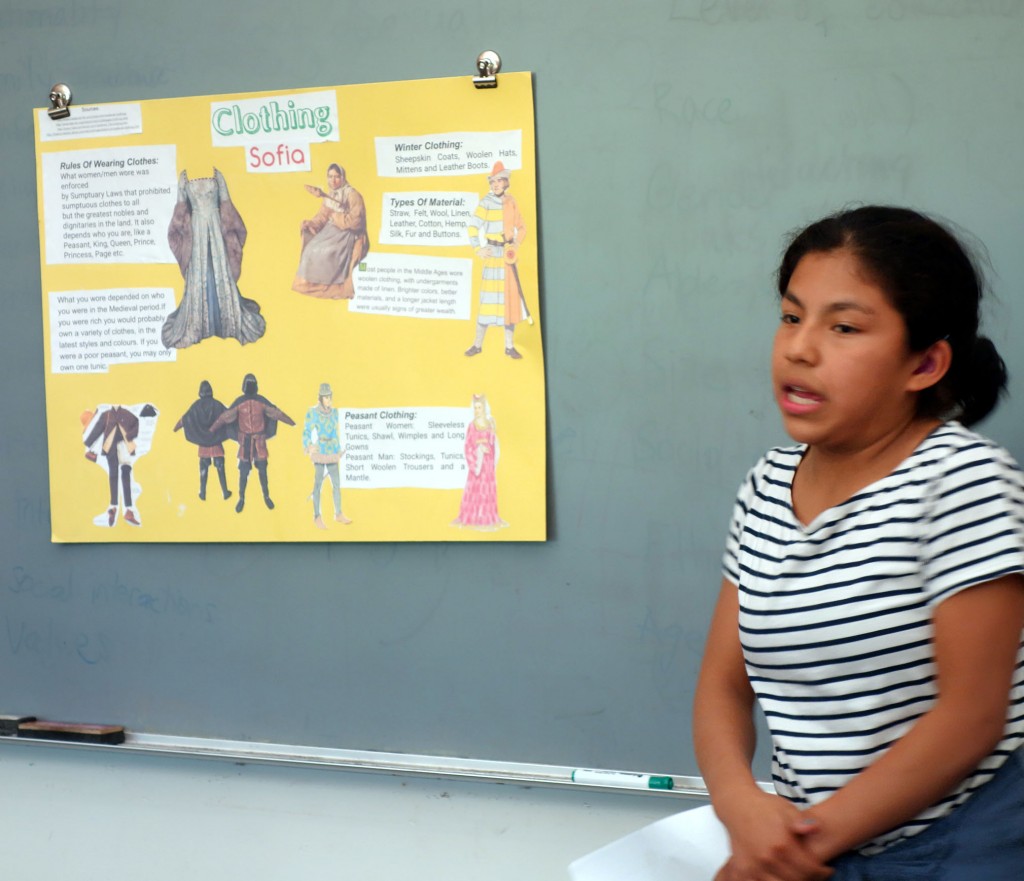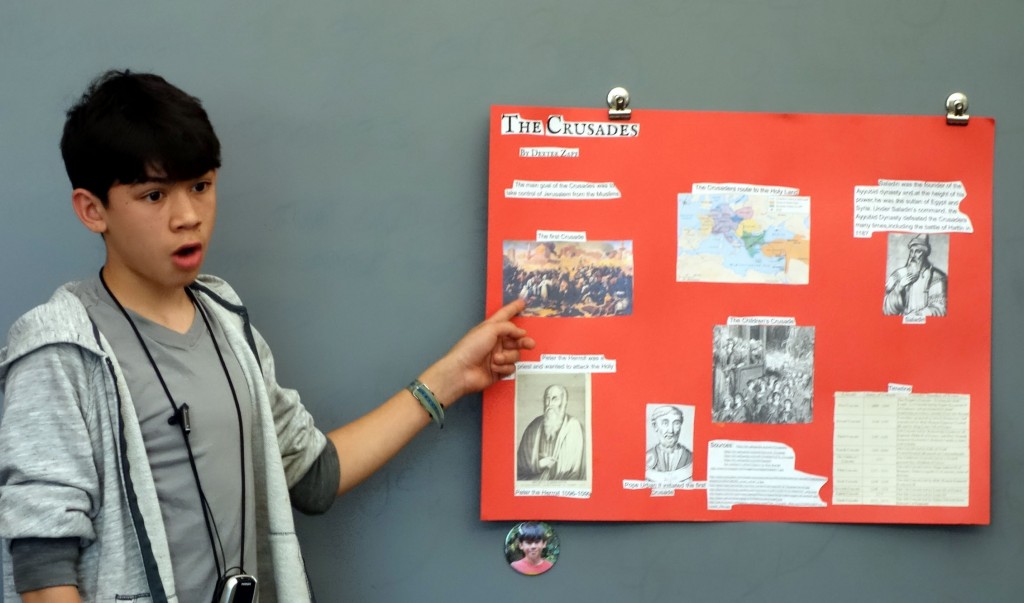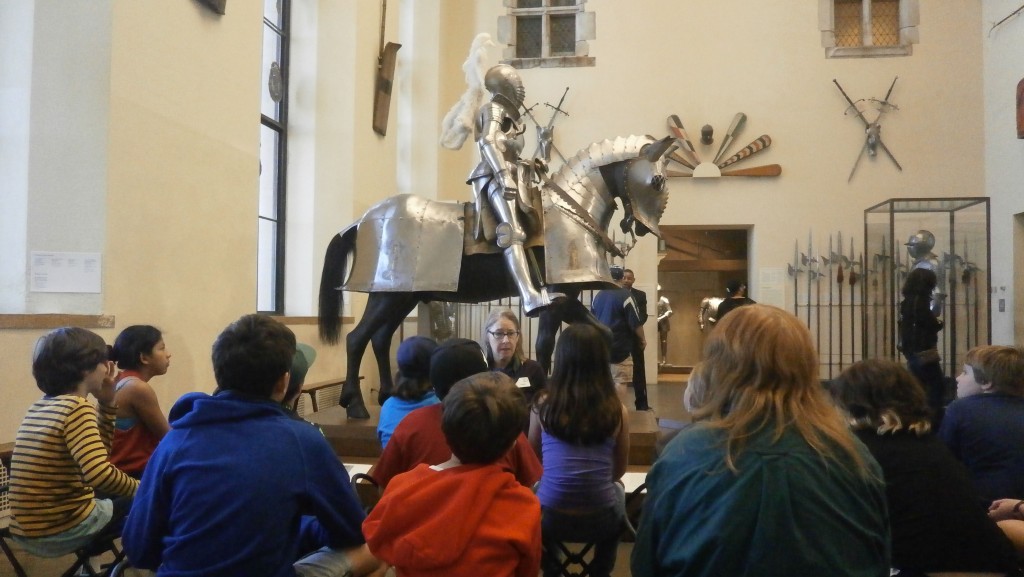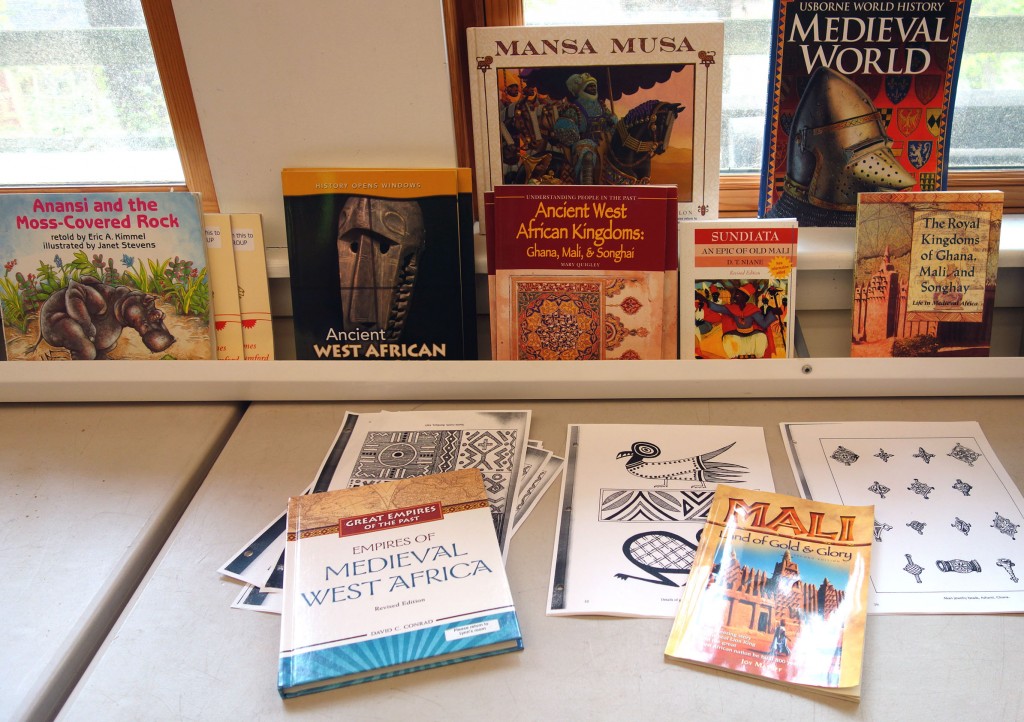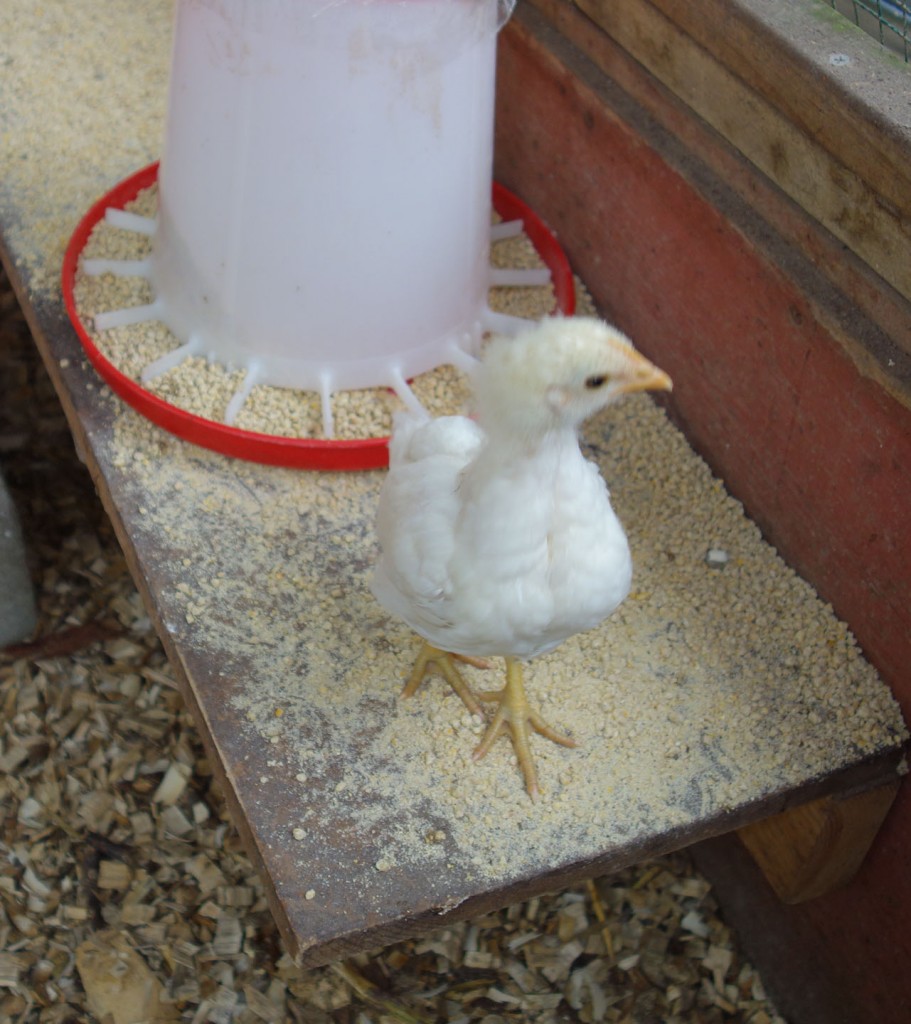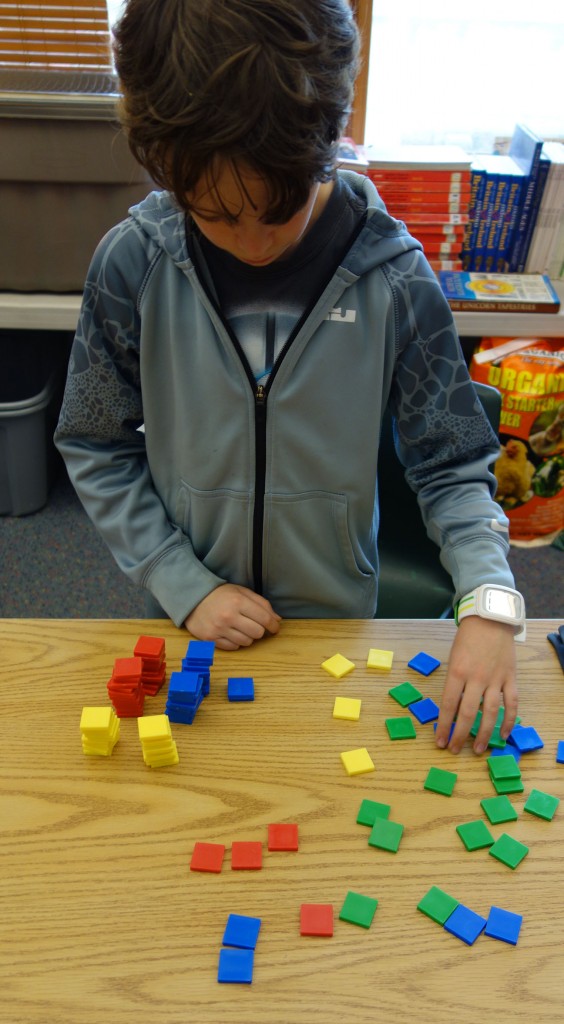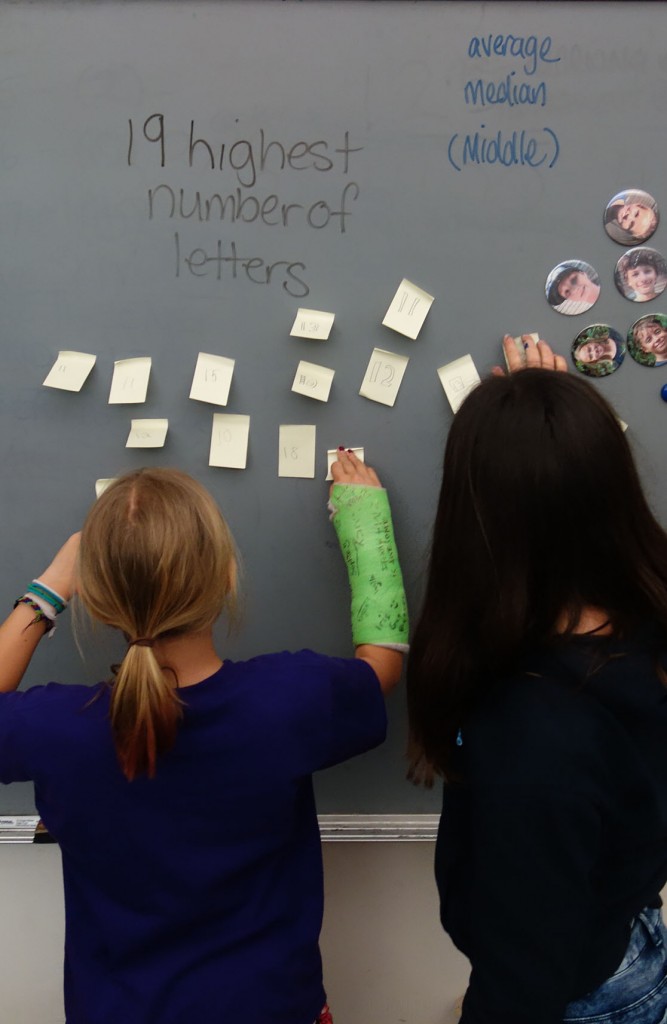Every Wednesday morning at 8:30, our two classrooms gather in Diane and Jeri’s room for a sing. I play guitar and Mark plays his upright bass. (We always encourage students to join us with instruments they play, but we haven’t had any takers yet.) This activity started several years ago at Diane’s suggestion. It’s been a popular weekly event and multi-faceted learning experience for many reasons, some of which I’m going to explain here.
The songs we sing span an enormous range — they include rock music from my pre-teen years (“Love Potion Number Nine”), songs too silly to be explained (“The Horses Run Around”), songs that tell a story (“The Cremation of Sam McGee”), songs that challenge our vocabulary (“The Similes”), and songs that speak to more serious topics (“Passing Through”). We do seasonal songs. We do a lot of American folk music. We do songs that connect with a time and place that we are learning about in one of our classrooms — such as westward expansion, immigration, the Civil War, and the Civil Rights movement. For both of these years, we have been gifted with children who are wonderfully tuneful and enthusiastic singers, and the harmonies that emerge from the rounds we sing are sweet and true.
While we sing, we also stop to talk about the songs themselves, the art of songwriting, and the history that gives some of the songs a context. We explore the idioms and metaphors that are part of the lyrics. We laugh a lot. Although it’s usually the teachers who choose the songs that are going to be introduced, we count on the students to make requests to do again some of the songs that are already in their increasingly-filled binders. They ask for all of the kinds we’ve done: serious, long, silly, and sad.
Community singing — with a strong component of folk music — seems to be a well-entrenched part of Progressive education. (It would be nice to add folk songs from other lands. Maybe next year.) It’s a part of our weekly routine that we almost never omit — even when our schedules are stretched to the breaking point at certain times of the year. We have invited Wendy and Sara’s group to join us next Wednesday so they can get a preview of the musical gatherings that will be part of their experience when they move to our building in September.
_____________________
Every year — usually in April or May — we spend some time on many different aspects of growing up and moving on to middle school. We call this topic “Changes and Choices.” It has evolved into a 2-year plan, with one year focusing more on puberty and all of the physical and emotional changes that go with it, while the other year focuses more on body systems in general as well as education that pertains to peer pressure, personal safety, and choices that involve drugs, alcohol, tobacco, and other risky behaviors. There is considerable overlap between the two themes, but the emphasis is different. This is the year in which we are exploring the second set of topics. However, we have also put out for general reading our collection of books about puberty, sex, and growing up. We’ve observed that there is a lot of eager reading going on, especially by some of our 5th graders.
This is the year in which we are exploring the second set of topics, under the heading of “Getting to Know Me.” However, we have also put out for general perusal our collection of books about puberty, sex, and growing up. We’ve observed that there is a lot of eager reading going on, especially by some of our 5th graders.
We make a lot of use of the KidsHealth website, going to parts of the teen section as well as the ones for younger people. Recently, we’ve explored portions of the extensive sections on drugs and on alcohol, and we’ve talked a bit about tobacco and e-cigarettes. We’ve also done some of the instructional quizzes on body systems and will be doing more. There was (and still is) a lot that is unfamiliar to our group. What does the liver do? Where is your spleen? What part of the brain controls breathing? How does the endocrine system respond to a frightening situation? These topics are all explicitly connected with each other. For example, as we talk about what excessive alcohol consumption does to the body, we can review the things we have learned about the nervous system.
One important component of this study is helping students understand that they need to take care of their peers as well as themselves, that there may be times in which they need to bring a problem to a trusted adult. We’ve discussed some hypothetical situations, observing that sometimes making the right decision can jeopardize a friendship. We’ve talked about times when communicating with a parent may be the right choice, even if the parent is going to be unhappy about the problem.
We strongly encourage parents to continue these conversations with their children and look at some of the resources on the KidsHealth website. (And yes, there is a section for parents, too.)

